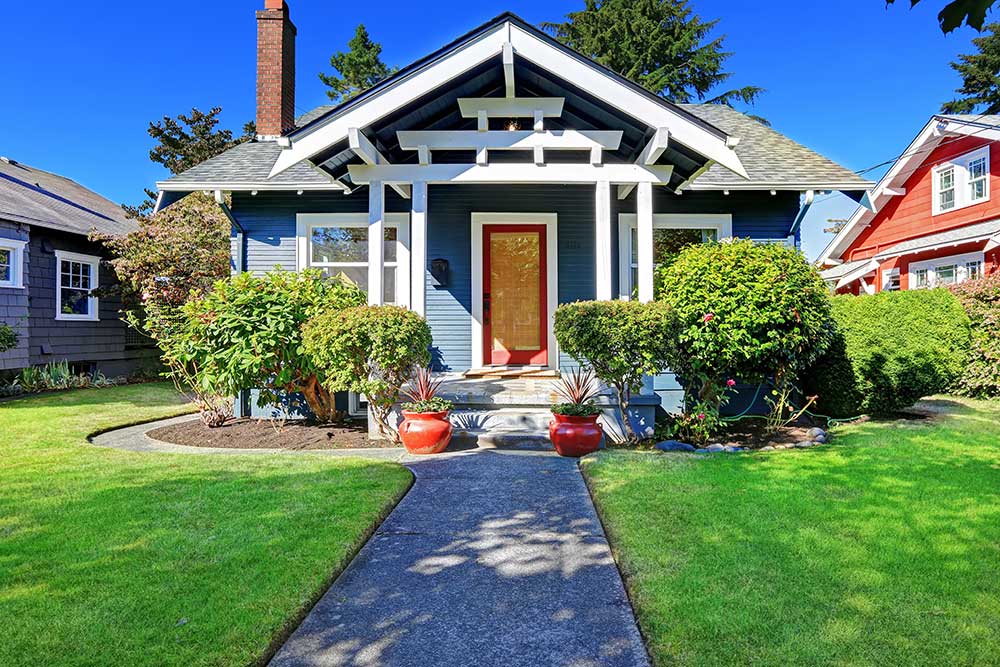For now, at least, interest rates are still at an all-time historic low. The average annual interest rate in 2000 was 8.05% with 1 point, according to FreddieMac.com, while the January 2015 average interest rate was just 3.67% with 0.6 points.
That’s a substantial discount, and it translates to lower monthly payments and significantly less interest paid overall. (These rates apply to owner-occupied dwellings, but they tend to reflect a similar trend in interest rates on investment homes.)
And since interest rates have really only one way to go — up — is now the time to snap up an investment property? Not necessarily. Lower rates may make real estate seem like a the best investment interest rates, but you should consider several other financial factors if you’re thinking about investing in a property.
Factor #1: Cap rate
If you’re eyeing the interest rate, it’s safe to assume you’re thinking about holding a rental property rather than flipping houses. (Interest rates make less of a difference when you’re holding a house for only six months or less, and banks don’t issue conventional 15-year or 30-year loans on flips.)
When you’re buying a rental property, you should first find the overall return you could get on a property, then research interest rates. To calculate this return, you’ll need to find the capitalization rate, or “cap rate.”
Here’s how you calculate it:
1. Decide what you’ll charge for rent. In this example, let’s say you’ll charge $1,000/month.
2. Add up your operating costs (including expenses such as insurance, utilities, and repairs, but not the principal and interest). Let’s say this comes to $550/month.
3. Subtract your operating costs from your rent to calculate your monthly “net operating income” (NOI): $1,000 – $550 = $450.
4. Multiply by 12 to calculate your annual NOI: $450 x 12 = $5,400.
5. Divide your annual NOI by the total purchase price of the property (let’s say it cost you $100,000): $5,400 / $100,000 = 0.054, or 5.4%.
This theoretical investment property will give you a 5.4% return on the asset value. That’s an OK investment — it could definitely be better. But ultimately, your personal goals and risk tolerance determine what you’d consider a “good” return.
Note that the interest rate is not a part of this calculation. The cap rate helps you evaluate the attractiveness of the property itself, not the attractiveness of the financing you might be able to secure for that property. This way, you can decide whether the property is worth the investment of your time before you even research interest rates.
Factor #2: Housing prices
The four factors that determine your mortgage payment are the principal (or house price), interest, property taxes, and homeowners’ insurance.
Assuming the taxes and insurance stay the same, a lower interest rate means you could qualify for more principal (read: a more expensive house).
But here’s the rub: Plenty of other people will find themselves in the same boat if interest rates go down — enough people that the price of houses may start to rise based on the increasing demand.
A low-interest-rate environment might actually make for a better time to sell rather than buy a house, if it turns out those low interest rates result in higher home prices.
Conversely, when interest rates rise, there’s a chance home prices might stagnate or even slightly decline, making it a better time to buy than sell.
Of course, other factors also impact housing prices, including employment, wage growth, the underlying price of materials, and more. But this particular example illustrates the fact that low interest rates don’t necessarily correlate with a discount on housing. In other words, low interest rates don’t automatically mean you’ll be able to get a great deal on a house.
Factor #3: Housing appreciation
A low-interest-rate environment doesn’t necessarily lead to future price growth.
Everything from employment and school districts to material costs influence the pace, direction, and severity of home price fluctuations. To use a dramatic example: In the past 30 years, home prices plummeted in Detroit and rose rapidly in San Francisco.
But every neighborhood has its own microclimate. Some neighborhoods appreciate faster than others or are better poised for growth, while others may have hit their peak or are on a downturn.
Real estate is inherently local, and these types of details are likely to have a far deeper effect than a 1% or 2% fluctuation in average mortgage interest rates.
Remember, the key here isn’t just how great a deal you can get on a house now; it’s how strong of an investment it will be for you over the long run.
Factor #4: Things aren’t what they used to be
While rates may be enticingly low right now, it’s more difficult to secure a mortgage than it was during the real estate investing boom of the 1990s.
The subsequent crash made lenders much more wary, and the requirements placed on borrowers are much stricter. Unless you’re in a solid enough position to buy an investment property with an attractive ROI, the low rates won’t do you very much good.
So, should you take advantage of today’s low rates to buy that investment property (or sell and trade up your current investment property)?
Maybe. (And maybe not.) The only way to answer that question is by focusing on the quality of the property itself rather than on that attractive interest rate.
Have you bought an investment property recently? Share your financing tips below!


